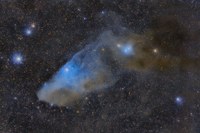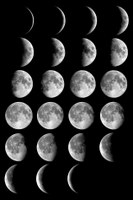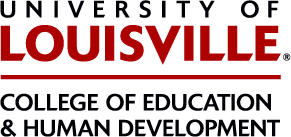- School Groups
- Educator Online Resources
- Educator Benefits
- Dual Field Experiences
- Educator Open House
- Grades 6-8 Field Experience Options
Grades 6-8 Field Experience Options
Two field experiences: $14/student:
Spend the day on campus! Schedule a morning 1.5 hour experience, break for a brown bag lunch in the planetarium lobby or outside courtyard, and come back into the planetarium dome for a second 1.5 hour experience.
While you're at UofL, take your students on a self-guided tour of campus.
Note: Each field experience ends with star tour, highlighting the constellations visible in the current night sky.
 Earth's Changing Landscape (1.5 hours):
Earth's Changing Landscape (1.5 hours):
Coming in January
Our journey will begin by observing the local environment around the University of Louisville and Kentucky before taking a virtual spaceship back in time. We will fly to the outermost distances of space and time that we currently have knowledge of and discuss early events that occurred during the formation of our universe. The Milky Way galaxy and our solar system will be explored, as we then uncover how Earth came to be in its current state. As we fly back to our planet, the importance of plate tectonics and natural processes will become clear in the formation of different rock types and a very different landscape than what once existed on Earth. Over billions of years, our landscape has changed dramatically and Kentucky has experienced a booming industry thanks to the changes that have taken place. Rich deposits of limestone have contributed to the evolution of horses and as a result, Kentucky is known for producing strong, fast thoroughbred horses. Join us in exploring the importance of our past for explaining our current success. This exploration includes our show, Supervolcanoes, which looks back at rare classes of eruptions that have marshaled the energy that lurks, like a sleeping dragon, beneath the surface of planet Earth. The experience concludes with a brief tour of the constellations in the night sky NGSS Disciplinary Core Ideas: ESS1.C, ESS2.A, ESS2.B, ESS2.C
(Note: make a day of it and schedule a dual Earth Science field experience with the planetarium and Kentucky Derby Museum. Click here for details.)
 Seasons, Weather, and Earth's Climate (1.5 hours):
Seasons, Weather, and Earth's Climate (1.5 hours):
Students’ imaginations are transported from an Earth-based perspective of seasonal variation in the Sun into a virtual spaceship for a space-eye view targeting the causes of seasons. This visual immersion into scientific information enables students to easily grasp complex 3-dimensional aspects of seasonal variation as well as Earth systems ideas targeting concepts such as the Sun’s energy is the primary driver of these systems. Highlighting distinctions between weather and climate, students virtually cruise in Earth’s orbit to explore visualizations of atmospheric and oceanic circulation patterns and their impacts on climate. This exploration includes the show Dynamic Earth, that explores the inner workings of the Earth's climate system. The experience concludes with a short tour of the night sky as we turn our imaginations to what else might be out there. NGSS Disciplinary Core Ideas: ESS1.B, ESS2.D
 Gravity and Galaxies (1.5 hours):
Gravity and Galaxies (1.5 hours):
Students are captivated as they witness the birth of the solar system through the virtual lens of the planetarium. Immersive visualizations enable them to understand the role of gravity in forming our solar system from a disk of dust and gas. Students absorb key concepts such as how the phenomenal force called gravity is the “super glue” of the universe, holding objects in orbit from the planetary scale of the Earth, to the solar system, to the galactic scale. This exploration transports students from our little blue marble throughout the solar system, into the Milky Way, and out of our galaxy to view some of the billions of galaxies in the universe – talk about feeling insignificant! This field experience includes the show *Black Holes, which explores these voracious gravity wells and their vital role in galaxy formation. The experience concludes with a short tour of the night sky. NGSS Disciplinary Core Ideas: ESS1.A, ESS1.B, PS2.B, PS3.C
*BIG may substitute Black Holes to be more age appropriate for certain groups
 Moon Phases and Scale of the Solar System (1.5 hours):
Moon Phases and Scale of the Solar System (1.5 hours):
Beginning by exploring complex 3-dimensional interactions of the Sun, Moon, and Earth to emphasize the cause of moon phases, students experience this phenomenon both from an Earth-based perspective and a space-eye view from a virtual space ship to thoroughly internalize this celestial phenomenon. Understanding of this dynamic interplay is enriched by explorations of causes of solar eclipses (and why they are so rare). Having mastered relationships in our astronomical neighborhood, students are guided into a much larger journey to grasp the scale of our solar system and key interactions within it. From this expanded view of our place in space, minds are stretched further as our virtual spaceship transports imaginations and visual perspectives out beyond our Milky Way galaxy, placing our cozy little solar system in the larger galactic context. And then space really gets big as some of the many billions of other galaxies emerge on the dome. This exploration includes the show *Perfect Little Planet, which features an alien family touring our solar system for the perfect vacation spot, encountering unique and interesting elements of our solar system along the way. The experience concludes with a short tour of the constellations in the night sky as we turn our imaginations outward. NGSS Disciplinary Core Ideas: ESS1.A, ESS1.B
*BIG or Oasis in Space may substitute Perfect Little Planet to be more age appropriate for certain groups.
Next Generation Science Standards 3-Dimensional Alignment
Each field experience program for school groups targets select Next Generation Science Standards (NGSS). The programs are aligned with elements of all 3 dimensions of NGSS: disciplinary core ideas, science and engineering practices, and crosscutting concepts. The visually rich and engaging experiences supplement your classroom instruction to offer students additional opportunities to consider both science practices as well as relevant larger crosscutting concepts in connection with the core science ideas. Click “NGSS Alignment” below for details.



